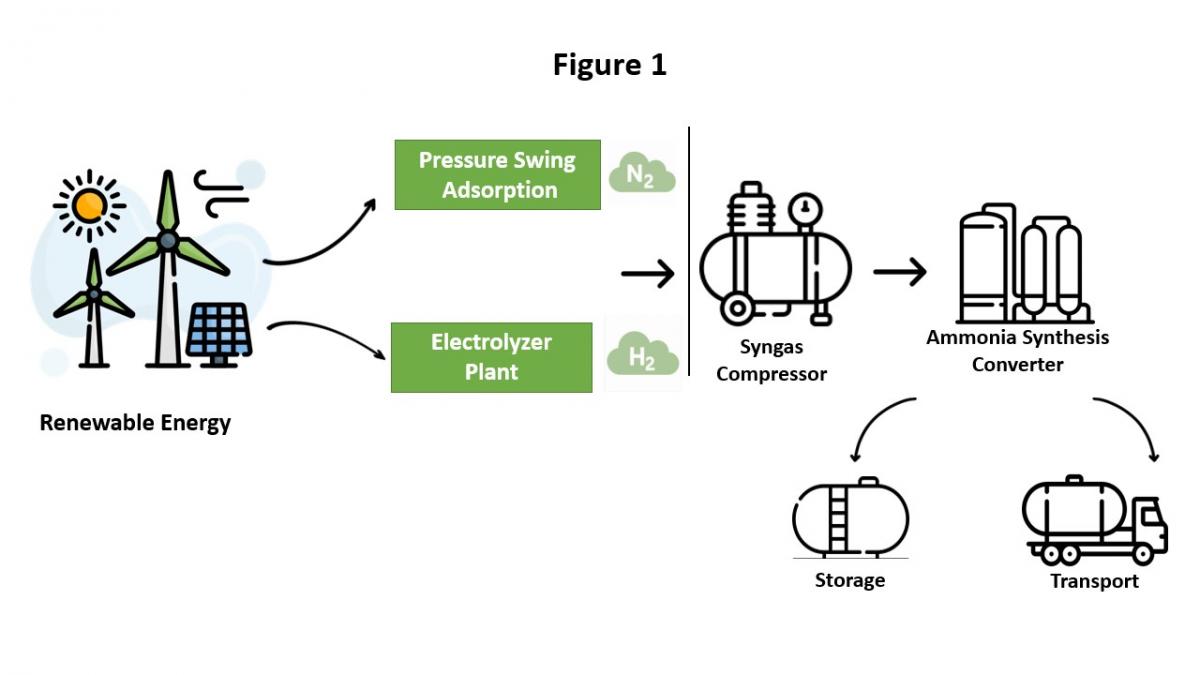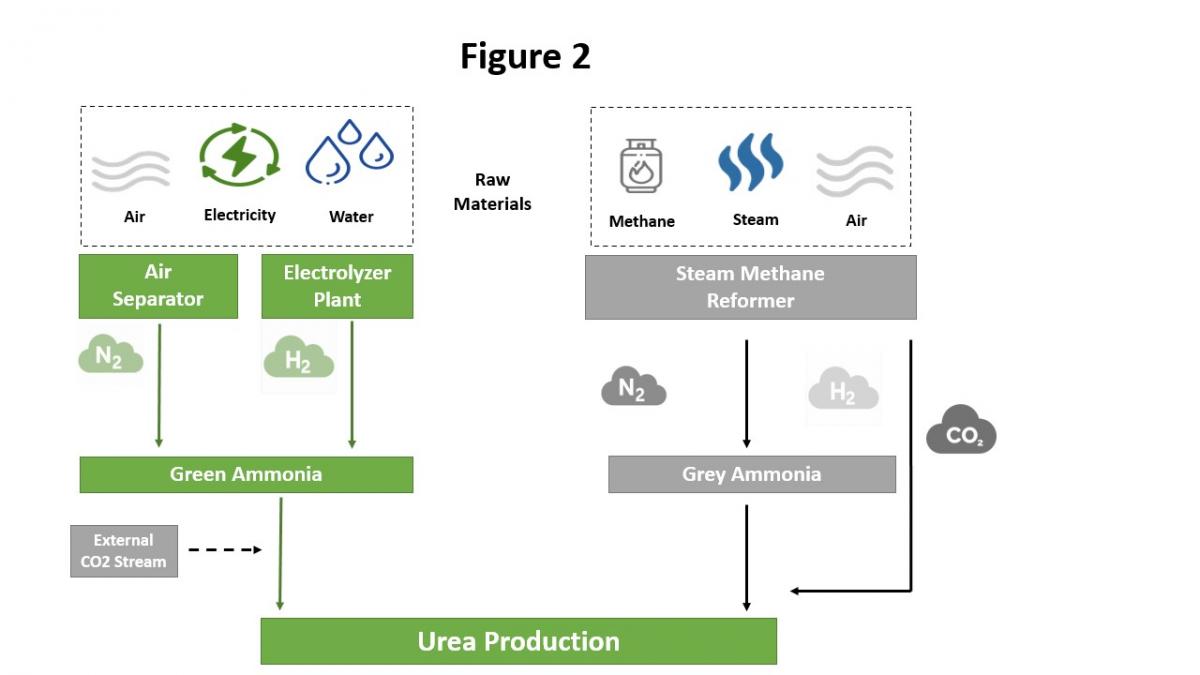Green Hydrogen Adoption in Fertilizer Manufacturing: Opportunities and Challenges
by e -
In the final blog of the three-blog series on India’s fertilizer industry, we look at the importance of shifting to green hydrogen in the fertilizer industry to reduce import dependence and achieving energy and food security. Read the first and second blog of the series.
India’s fertilizer sector is dependent on imports of natural gas, ammonia and fertilizers. Geopolitical conflicts and supply chain disruptions have caused abnormal spikes in the cost of these imported commodities, specifically natural gas, thereby increasing the fertilizer subsidy burden on the exchequer.
Domestically produced green hydrogen and ammonia can help reduce India’s dependence on imports for raw materials, enhance food security and limit emissions from fertilizer manufacturing. While green hydrogen has the potential to reduce India’s dependence on natural gas imports, many diverse challenges currently exist at the level of implementation. Identifying these challenges and leveraging the opportunity to employ green hydrogen for the future of India’s fertilizer industry can help ensure food security while enabling resilient agricultural value chains.
Ensuring a sufficient supply of raw materials and energy feedstocks
Supply chain disruptions due to geo-political conflict, inflation and rising fuel prices often lead to constraints on the availability of natural gas. Fertilizer manufacturers require alternative feedstocks and raw materials to function smoothly during such disruptions. Domestically produced green ammonia, a derivative of green hydrogen, can replace imported ammonia. Green hydrogen produced locally, can also act as an energy carrier for remedying import dependence on fossil fuels in addition to creating export capabilities for its derivatives including ammonia.
Need for technology upgradation for green hydrogen adoption
Given the direct applicability of ammonia in various chemical processes and ammoniacal fertilizers, many industries are willing to transition to green ammonia to meet their decarbonization targets. Grey ammonia is produced by directly using the nitrogen from the atmosphere, whereas green ammonia uses nitrogen that is physically separated using a pressure swing adsorption (PSA) unit.
Multiple technology providers are working to improve green ammonia technology. Nanjing Kapsom Energy Limited, a company specializing in design, engineering, and construction of chemical plants, has developed the World’s First Green Ammonia Plant in Bikaner, Rajasthan. It is a containerized unit with an alkaline electrolyzer for hydrogen production and a PSA for nitrogen gas (Figure 2) with ammonia as the end product.

Integrated fertilizer plants produce urea by reacting ammonia and carbon dioxide (CO2), a compound already present as a by-product in fossil-derived ammonia production. For urea production using green ammonia, urea manufacturing plants will have to import CO2 externally, from other concentrated CO2 streams like the cement industry.
As the industry transitions to green hydrogen, urea plants will need to use a blend of grey and green ammonia to continue the stream of carbon dioxide (Figure 2). However, complex fertilizers do not face this challenge and can readily utilize green ammonia. In India, complex fertilizers (other than urea) consume about 3 million tonnes of ammonia per year, equivalent to about half a million tonnes of hydrogen. These plants can easily switch to green ammonia and in many cases use the existing manufacturing process.

Consensus on green hydrogen standard
A critical step in deploying green hydrogen for decarbonization is providing its definition in precise and technical terms. Establishing a common standard for green hydrogen can help with accurate tracking of its key attributes and enable global trade. As the industry is still in its infancy, ambitious standards should be avoided to enable ecosystem development.
Impact on cost of production
Considering that grey hydrogen prices are currently determined by the price of fossil fuels and foreign exchange (in case the fuel is imported), urea manufacturing is vulnerable to uncertainties in natural gas prices. Urea prices hit ₹44.2/kg in the international market in October 2022. However, its retail price for agriculture remained at the subsidized rate of ₹5.3/kg in India. Domestically produced green hydrogen can help the government curtail the trillion rupee fertilizer subsidy bill and achieve a self-sufficiency milestone in urea production.
Green hydrogen economics primarily depend on capital investment for electrolyzer, operating expenditure for its periodic maintenance (owing to stack replacement) and renewable energy costs. In the years to come, the price of urea using green hydrogen is expected to decline with a fall in capital investment and renewable energy tariffs. To further bring down the technological costs of electrolyzers, the National Green Hydrogen Mission targets incentivizing domestic hydrogen production till the prices become competitive with grey hydrogen. In addition, measures such as carbon pricing for grey hydrogen and indirect incentives (such as tax reimbursement) can also help bridge the price gap.
Switching to green hydrogen
India is one of the largest agricultural product exporters in the world and is set to be the most populous country on the planet. It is pertinent for India to ensure the timely and affordable availability of fertilizers to ensure food security. Self-sufficiency in fertilizer manufacturing will require investment in joint ventures and harnessing the RE potential of the country.
To kickstart the consumption of green hydrogen in major industries, the Ministry of Power notified the Green Hydrogen/ Green Ammonia Policy which offers benefits in connectivity, time-bound open access, banking, bunkers for green hydrogen storage and waiver of inter-state transmission charges. These measures, paired with the recommendations made in this article, have the potential to enable green hydrogen/ammonia adoption in India, build the resilience of India’s fertilizer industry against various externalities, and ensure food security for a growing nation.
All views are personal.


